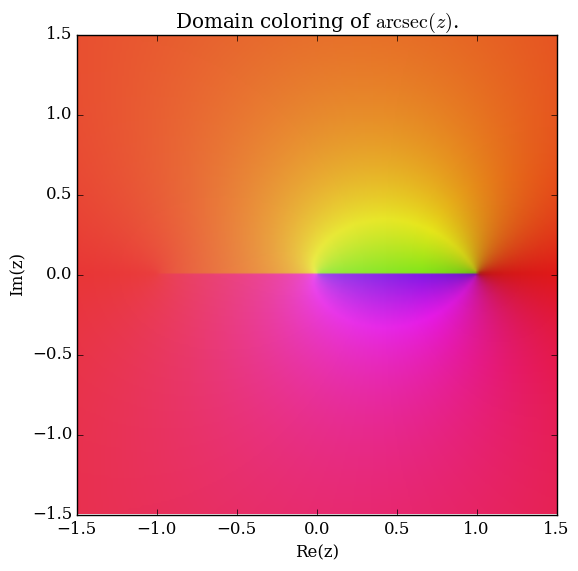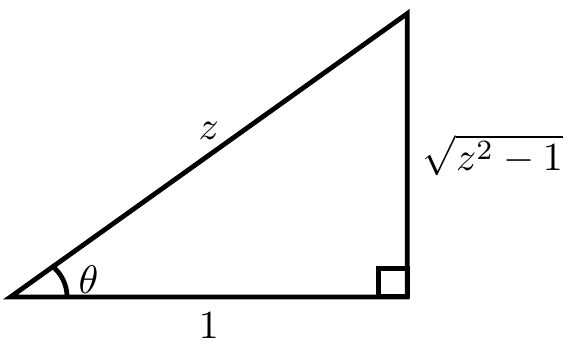Difference between revisions of "Arcsec"
(→Properties) |
|||
| Line 6: | Line 6: | ||
=Properties= | =Properties= | ||
| − | + | {{:Derivative of arcsec}} | |
| − | |||
| − | |||
| − | |||
| − | |||
| − | |||
| − | |||
=See Also= | =See Also= | ||
Revision as of 23:08, 15 May 2016
Domain coloring of $\mathrm{arcsec}$.
Properties
Theorem
The following formula holds: $$\dfrac{\mathrm{d}}{\mathrm{d}z} \mathrm{arcsec}(z) = \dfrac{1}{z^2\sqrt{1-\frac{1}{z^2}}},$$ where $\mathrm{arcsec}$ is the inverse secant function.
Proof
If $\theta=\mathrm{arcsec}(z)$ then $\sec(\theta)=z$. Now use implicit differentiation with respect to $z$ and the derivative of secant to see $$\sec(\theta)\tan(\theta) \theta' = 1,$$ or equivalently, $$\dfrac{\mathrm{d}\theta}{\mathrm{d}z} = \dfrac{1}{\sec(\theta)\tan(\theta)} = \dfrac{1}{z\tan(\theta)}.$$ The following image shows that $\tan(\mathrm{arcsec}(z))=\sqrt{z^2-1}$:
Hence substituting back in $\theta=\mathrm{arcsec}(z)$ yields the formula $$\dfrac{\mathrm{d}}{\mathrm{d}z} \mathrm{arcsec}(z) = \dfrac{1}{z\tan(\mathrm{arcsec}(z))} = \dfrac{1}{z\sqrt{z^2-1}}=\dfrac{1}{z^2\sqrt{1-\frac{1}{z^2}}},$$ as was to be shown.

